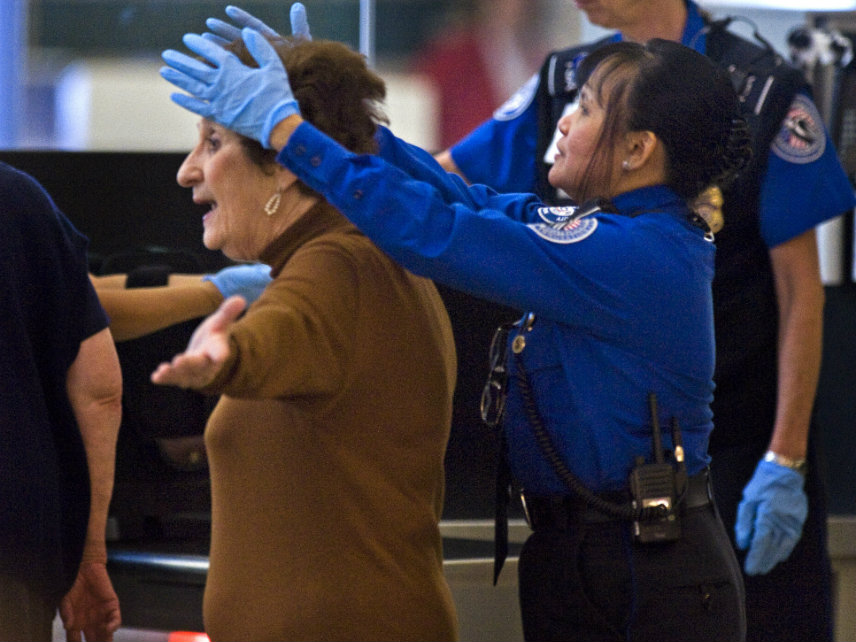The TSA Is Still Really Bad at Evaluating Risk
The GAO says the TSA doesn't do a good job of putting its resources where the threats are.

As millions of Americans get a friendly holiday pat-down on their way to Grandma's house, here's a not-so-comforting reminder: The Transportation Security Administration (TSA) is still really bad at the one thing it's supposed to do.
A new Government Accountability Office (GAO) report concludes, yet again, that the TSA does a poor job of assessing risk and allocating resources appropriately. Though the agency is most obvious (and most obnoxious) at airports, the TSA also plays a regulatory role in the security of America's train lines, mass transit systems, and pipelines. You're not going to see X-ray machines installed at your local metro stop—thankfully—because surface transportation operators have the primary responsibility for securing their systems.
The TSA, meanwhile, employs "surface inspectors" to enforce security regulations for freight and passenger rail. According to the GAO, the agency has not updated its comprehensive risk assessment since 2009. "Given that TSA spends only about 3 percent of its budget on surface activities, it is crucial that the agency have complete information on how resources are being used in order to best allocate these limited federal surface transportation security resources," the auditors write.
Even with the information it has, the TSA makes poor decisions. One mode of surface transportation deemed the lowest risk by TSA (the report does not specify which mode) accounts for 6 percent of domestic risk, but it received between 35 and 45 percent of the agency's attention between 2013 and 2016.
"TSA officials could not provide documentation of how and why they selected certain work plan activities to address lower risk modes, or how they monitored the extent to which implemented activities aligned with or addressed risks," the GAO finds. "As a result TSA could continue to prioritize its limited resources to lower risk surface modes, leaving fewer resources available for higher risk modes."
Remember: Assessing and countering terror risks is literally the TSA's only job.
Terrorism, even the threat of it, is scary. But it is unrealistic to expect any government agency—espescially one that routinely fails to catch knives and other weapons being smuggled through its own airport security apparatus—to stop all determined attackers. There simply aren't enough resources to cover all the potential targets and stop all potential threats. That's why risk assessment is critical, and it's why understanding of risks must evolve as threats and terror tactics do.
Bureaucracies are not exactly famous for their ability to evolve quickly. The TSA's problem likely goes well beyond the simple fact that it has not updated its comprehensive risk assessment guidelines in eight years—something the agency says it will start doing shortly. The deeper problem is that it is a sprawling, calcified government operation that was created to counter a very specific method of attack in the wake of 9/11. Terrorism today looks quite different. If the TSA cannot keep up, Congress should consider some alternatives.


Show Comments (12)